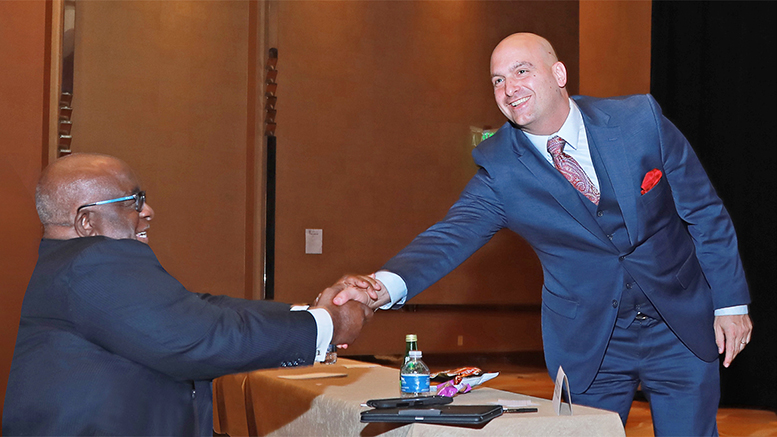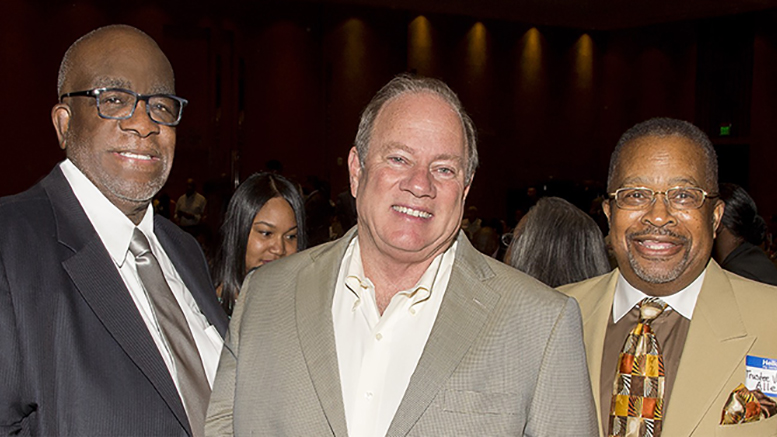When Curtis Ivery became chancellor of the Wayne County Community College District (WCCCD) in 1995, he promised his wife he would stay at the job for two years. Twenty-three years later, he’s one of the longest-serving community college chancellors, and he doesn’t seem ready to leave the Michigan college anytime soon.
“It’s been an odyssey,” said Ivery, who spoke with CC Daily during WCCCD’s Detroit Urban Summit III last month.
WCCCD opened its doors in 1967, during a time when cities across the nation were experiencing protests and civil uprisings, including Detroit. Following Detroit’s own experience, Detroit leaders sought to create new opportunities for residents, including higher education. In those first decades, though, there was a revolving door of chancellors and little stability.
When Ivery took over nearly 25 years later, he spent his early years stabilizing the district. WCCCD grew from serving 7,000 students to serving nearly 70,000 annually. WCCCD is the largest urban community college district in the state, covering some 36 cities and townships, and 500 square miles. Its students are diverse, speaking some 50 different languages and coming from every walk of life.
But being the largest open-door urban institution means dealing with perennial issues that don’t necessarily affect other institutions.
“I’ve spent a lot of time explaining what it is to be an urban institution and to serve our population,” Ivery said.
The goal of WCCCD is to create pathways to better lives through higher education. Being a front-line provider of higher education means meeting students where they are and helping them grow to where they want to be.
Many WCCCD students work at least part time. Some have families and are transitioning from careers they thought would make them recession-proof. Still others are dealing with structural elements endemic to urban neighborhoods dealing with poverty, such as finding adequate access to transportation, child care and housing. Many can’t afford textbooks. Most receive financial aid.
When Ivery talks about the students, he describes a broad spectrum of people, but the stories that affect him the most are those that are overcoming untold hurdles to get an education: students who spend two-and-a-half hours on buses to get to class, students who are temporarily living in shelters, and those who have not set foot in a classroom for more than a decade.
“We have had to redefine the mission of community college,” Ivery said. “We are not just an institution that enhances educational outcomes for our students, but one that is also invested in empowering the communities in which we serve, including addressing structural hurdles our students confront on a daily basis.”
Making progress
WCCCD offers free shuttle service between its five campuses. Students also receive more face-to-face advising, so they can get complete information they want and need about financial aid, about where the jobs are, and even which classes have the most rigorous curriculum. And facilities on the campuses are “first-class,” which helps students “value and appreciate the institution,” he said.
This is all part of the college’s Pathways to the Future initiative, which was developed in 2001 after voters approved a millage increase in WCCCD’s property tax levy, ending years of severe budget limitations.
One of Ivery’s signature projects is WCCCD’s Institute for Social Progress, an urban studies and educational center, which produces research and publishes works with leading universities and applies them to programs aimed at promoting equity in higher education. The structural elements related to “concentrated poverty” are a topic of research, according to Ivery.
“Our work focuses on key issues affecting both urban and suburban populations,” Ivery said. “Our unique position within Detroit as a major educational institution, coupled with our metro campuses, allows us to engage key issues of educational equity, economics and community dynamics in important and innovative ways.”
These issues led Ivery and WCCCD to launch a series of national events, the most recent of which was the Detroit Urban Summit III: A National Conference on Integration, Civic Engagement and Educational Equity in the Future of American Democracy, held in late June.
The summit brought together leading scholars, authors, community leaders and policymakers to discuss educational equity and integration in schools and throughout communities, both locally and nationally.
Speakers included: john powell (who prefers to lower case his name), director of the Haas Institute for a Fair and Inclusive Society at University of California, Berkeley; Maya Wiley, professor of urban policy and management at the New School in New York City; Leonard Pitts, Pulitzer-prize-winning columnist; Lee Teitel, director of Reimagining Integration: The Diverse and Equitable Schools Project at Harvard University; Elizabeth Anderson, author and professor at University of Michigan; Randall Robinson, founder of global nonprofit TransAfrica and civil rights attorney, and more than 20 others.
“The Urban Summit reflects our much broader and comprehensive work in addressing the challenges we face to improve our communities on local and national levels,” Ivery said.
Joining forces
At the summit, as issues were raised and data were used to paint a picture of gaps in the K–12 and higher education systems — in funding, diversity and attainment — one theme came up consistently was collaboration.
For all of Michigan’s 28 community colleges, “collaboration is in our DNA,” according to Mike Hansen, president of the Michigan Community College Association. That collaboration is key to ensuring that students have the skills and support to succeed, which Hansen calls a “moral imperative.”

WCCCD Chancellor Curtis Ivery greets Detroit Public Schools Community District Superintendent Nikolai Vitti at the summit.
In Detroit, in particular, the public K–12 system and WCCCD are collaborating on pathways for students to ensure they aren’t earning “a diploma to nowhere,” said Nikolai Vitti, superintendent of the Detroit Public Schools Community District (DPSCD). Like Ivery, Vitti took over a system that was in trouble.
The schools were being run by emergency management, with “lack of system, processes and vision,” Vitti said. “The district was destroyed.”
Work is ongoing to rebuild the system and advances have already been made: new curriculum and standards were introduced, particularly in terms of literacy and math; an attendance agent reaches out to truant students; and there are more opportunities for students to earn college credit while in high school. DPSCD and WCCCD are working together on dual-enrollment programs.
“Our children are talented. They just need opportunity,” Vitti said. “The best college-going strategy is to take college classes at the high school level. There’s no asking, ‘Am I college ready?’”
Ivery and WCCCD are “filling a niche for giving students an equal opportunity, despite what did or did not happen in their high school,” Vitti told summit attendees.
More broadly, the theme of educational access is a, “fundamental issue of what we mean by ‘Democratic values,’” said Summit speaker Maya Wiley.
Others, too, are looking to WCCCD to help a recovering city and its citizens.
“Wayne County Community College District’s mission is Detroit’s mission,” said Christine Johnson McPhail, managing principal of a higher education consulting firm that’s worked with WCCCD.
It’s a long game, but Ivery “doesn’t suit up to play,” McPhail said. “He suits up to win.”

